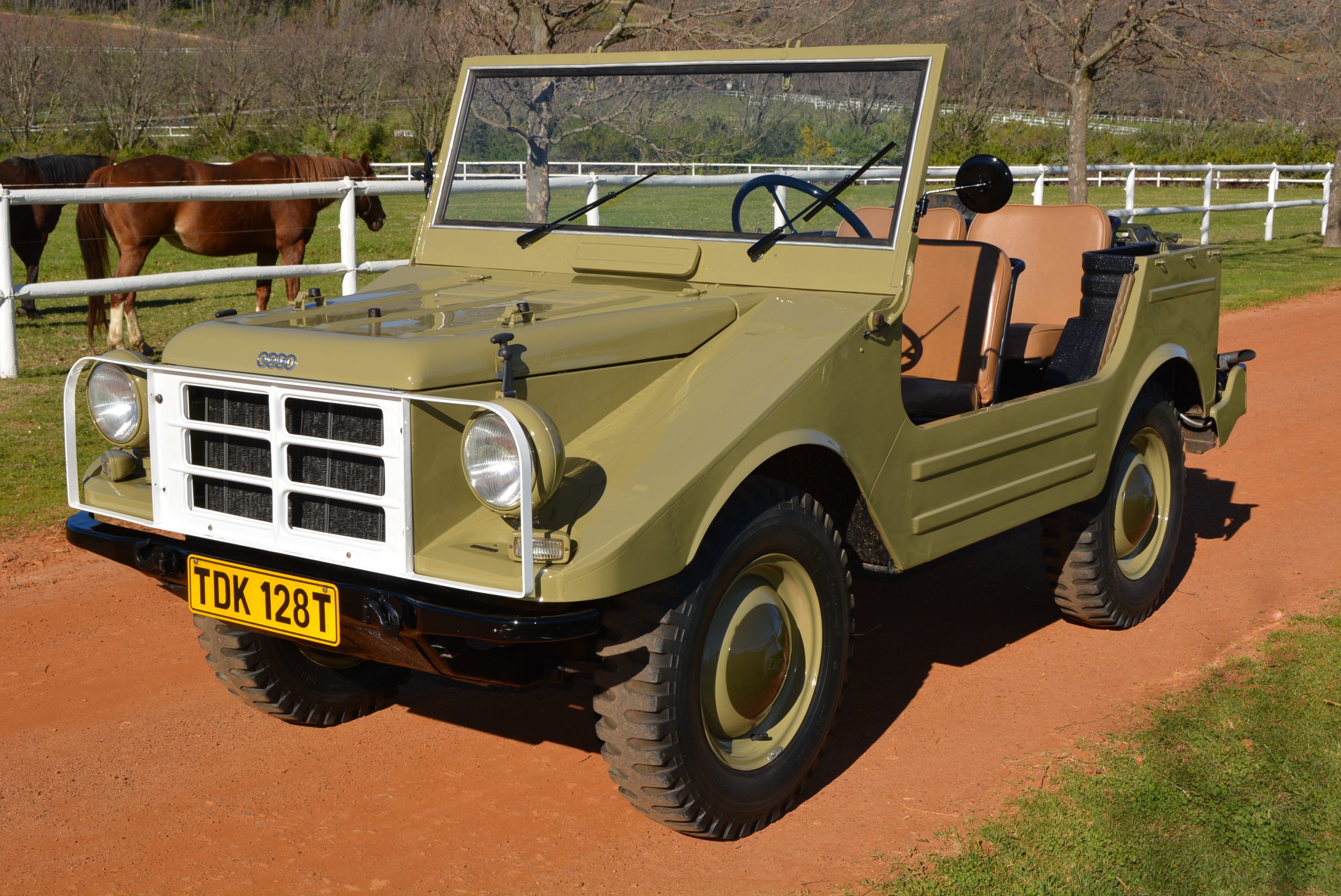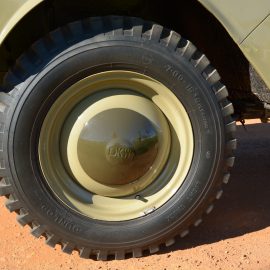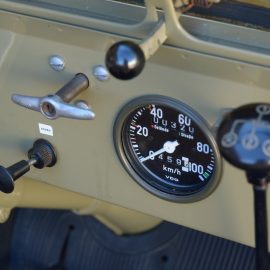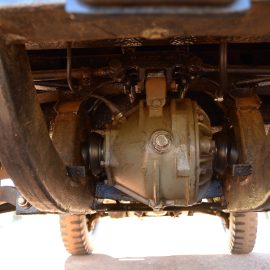
02 Oct Munga Update
Ullrich Märker, a chronicler and expert on the DKW Munga for decades, has been in touch with us from Germany with a number of comments about FMM’s Munga that was featured in the Collection In Action story in the April newsletter.
“Regarding FMM’s Munga 4, first of all, the vehicle is not a 1960 model. It probably was first registered in 1960 but the chassis plate – 30506999 – shows it to have been manufactured in 1958. It was handed over to the shipping department at the Ingolstadt factory on 30 January 1958, so production started in the last days of January. It was factory painted in olive yellow RAL 7008, had the 900cc DKW engine with 40 hp and a 12 volt electrical system with 160 watt alternator. The engine number was 6630 7356. It was delivered without heating (extra charge) and had a ball head trailer hitch. The glove box lock had the number 1264, front and rear canvas side panels were mounted, the tyres were made by Dunlop in size 6.00×16, although FMM’s vehicle is currently fitted with 7.00×16. The battery was made by Moll. The Munga never had a three-speed gearbox, but a partially-synchronised four-speed. This unit was one of 32 units shipped by rail and sea to Auto Union in Pretoria in 1957-8. The invoice was issued in April 1958. Altogether, about 150 Munga 4s were delivered to Pretoria in 1957/58.
“In addition, in general terms, the Dutch Army received not 2 000 but about 2 100 F91/4 vehicles in the period from April 1963 to February 1965. Not all of these vehicles had transmission problems throughout, the problem not being caused by the gearshift, but because of their age.
“The DKW off-road vehicles were sold after their period of military use. Buyers were found in the Netherlands, Belgium, France and England, helped by the vehicle’s favourable pricing.
“Also, not only about 10% of the vehicles produced were sold for civilian use. Around 5 500 were exported worldwide by Auto Union GmbH between 1957 and 1968. Approximately 1 500 units were sold in Africa alone. In addition, of course, there were civilian sales in Germany.
“The unladen weight of 1 085 kg stated in the story is the so-called military unladen weight. The Munga is lighter in the civilian version.
“Based on the photos, the cover plate from the rear differential is missing and the windscreen wiper motors are not original. The windscreen frame has been exchanged for a newer model from 1961 or later.
“Finally, the use of 7.00×16 tyres is questionable and critical. The test series at the German Army was aborted at the time because, on the one hand, there was enormous wear and, on the other, due to the significantly increased weights the axle suspension could not cope with this permanently!
“May all be informative and helpful. I am always pleased to see vehicles abroad and to be able to read up on a lot of information.”
FMM sends its sincere thanks to Ulrich for contributing such valuable detailed information.






